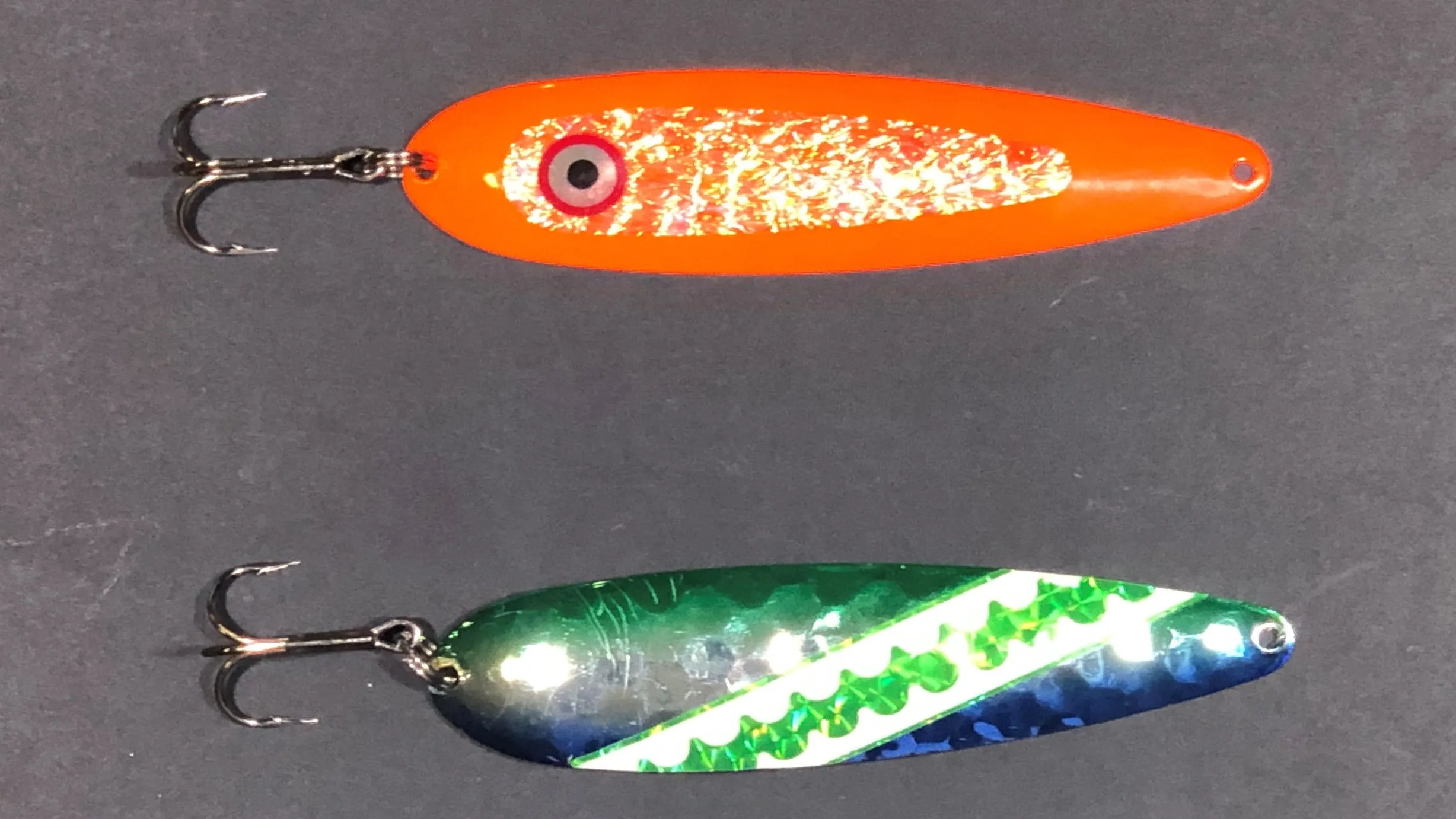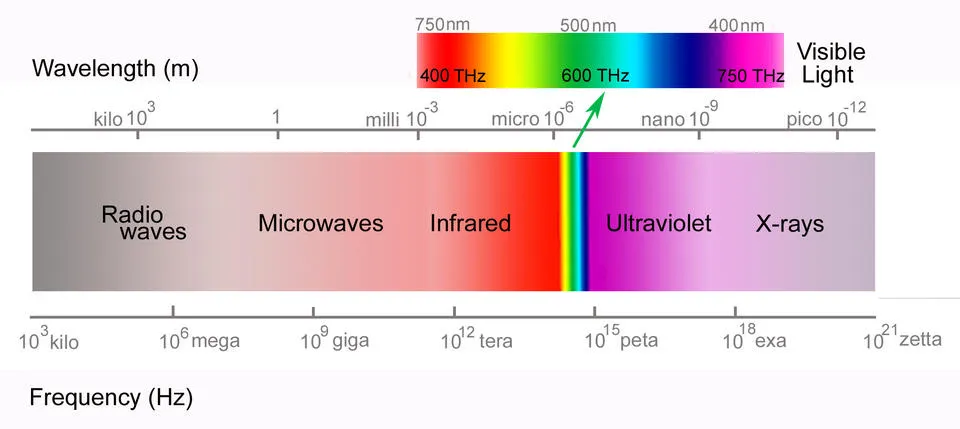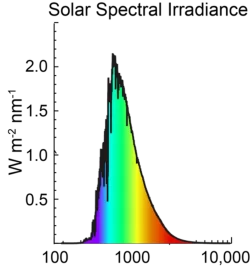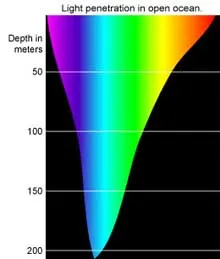Lure Color Selection

* This page contains affiliate links. The Great Lakes Fisherman may earn a commission on items purchased through these links. For more on this, please click here.
Color selection for fishing lures is a controversial topic. Everyone has an opinion on what a fish wants and why. But what does science say about the matter? I think we can all agree that color matters, but how do we know which colors work best in any one scenario? Here we will explore light properties under the water and how that impacts lure color selection.
How Fish See Color
Before we go any further, it is important to note that a fish’s vision is very similar to that of humans. They have cells that process light in very similar ways to us both during the day and at night. This is important because as we understand how colors change in the water, we will understand how a fish sees it. One minor difference is that a fish’s visual range is a bit broader than ours, allowing them to detect some ultraviolet light that we can’t see. But this difference is, for practical purposes, irrelevant. So for our purposes here, we can assume that fish see things generally the same way as we do.
Light and Color
Although light is still not fully understood by science, many of its properties are. Color is one of them. Each light ray has a property known as frequency and wavelength. In a sense, these are one and the same as they are inverses of each other. The higher the wavelength, the lower the frequency and vice versa. Quite simply, each frequency/wavelength of a light ray that hits your eye is correlated to the color that you see.
When these rays hit the retina at the back of your eyeball, they enter a line of cells called cones. These cells come in three varieties to detect just 3 colors: red, green and blue. From there, signals are sent to your brain where your brain process all 3 signals and turns them into the color you “see”.
Light frequencies span a very large range. But there is only a small range of these frequencies that is known as visible light and this is the only light we can “see” with our naked eye. The visible range starts at what we see as red light on the lower frequency end and goes up to violet light at the higher frequency end. Light frequency that is below the red end of our visible range is known as infrared light (meaning “below red”). Frequency above the violet end of our visible range is known as ultraviolet light (meaning “above violet”).

Color Changes with Water Depth
Nearly all light in the water column is coming from the surface. During the day, most of that light is coming from the sun which carries all frequencies of visible light. However, the sun doesn’t deliver these frequencies in equal amounts. The chart below indicates the relative intensity of the various light wavelengths emitted by the sun that are within the visible range.

From the chart, we can see the the green region of the spectrum has the most intensity. Put quite simply, there is more of this green light entering the water column than any other. This is important in understanding how things are seen under the water.
But this doesn’t tell the whole story. The higher the frequency, the more the light will penetrate the water column. This means that lower frequencies will be absorbed by the water more than higher frequencies. As a result, almost all of the red light will be absorbed in the top part of the water column. To the contrary, violet light will penetrate the deepest.
So if we combine the relative intensity of each frequency with the depth at which it can penetrate, we get something that looks like the following diagram.

From this diagram we can see that the combination of intensity and penetrability make bluish-green light the most abundant in deep water. So how can we use this information to help understand what a lure looks like under the water?
How Lures Reflect Light
Now that we understand how much light of various frequencies is in the water column, let’s discuss how that light interacts with the lures we put down there. To do this, we need to understand how light is reflected off of objects. This will tell us how light “looks” coming from the lures.
Every material absorbs and reflects light differently. When we perceive an object’s color, it is due to the combination of reflected light frequencies that are hitting our eyes.
For example, when we see the color red, that means that based on the combination of the light frequencies that are reflected off of the object, our brain is interpreting that as red. This might be because the only light frequency hitting our eye is red light. But usually it is because the combination of frequencies hitting our eye results in our brain processing them as red. Either way, we see the object as red.
Impacts on Lure Selection
So now that we understand how light interacts with the water and lures, how can we make use of this information to our advantage?
Suppose you are trolling for salmon in 100′ of water and are marking fish. As a result, you have your trolling spoons set 50′ down. Earlier in the spring, you were catching easy limits in shallow water (less than 20′ deep) on orange spoons and you decide to include a healthy number of those colors in your trolling spread. To your surprise, you are not catching anything on those colors. You have, however, been consistently getting bit on two green spoons that you have down there. What is going on? How could a color that was so hot in the spring be so cold now?
Referencing the chart above, we can see that red and orange light doesn’t penetrate very deep into the water column. This means that the orange lures will look significantly different in the deep water than what they looked like in the shallow water back in the spring. To be fair, any color will look different in deeper water, but the closer the lure colors are to the colors that penetrate that depth, the less change there will be in their appearance. This also doesn’t mean that fish won’t hit a red or orange lure in deep water. But it does mean that those lures won’t show up nearly as well as some of the colors in the middle of the spectrum, such as hues of blue and green.
Water Clarity Affect on Color
So now that we have discussed water depth, what about water clarity?
We all know what happens when we put on a pair of those yellow sunglasses. It doesn’t just change the intensity of the light, but it changes the colors we see as well. A similar thing happens in stained or turbid water. The suspended particles in the water absorb and reflect light just like any other material. Based on what is in the water, certain frequencies of light will be absorbed and others will be reflected. This causes a change to the perceived color of a lure in the water. This is why certain colors work better in some stained water than they do in clear water and vice versa.
Really Dark Water
At times we have to fish in water that is extremely dark, where light is almost non-existent. This could be water that is very deep, or it could be water that is so stained that light is just not penetrating very far. You might also be fishing at night. In these cases, the color under the water can be so dim, that the very low signals from the cone cells in the eyeball are being overridden by a different set of cells known as rods.
Unlike cones, rod cells only distinguish between shades of black and white. Effectively, they signal contrast, or differences between shades. Furthermore, light entering from the periphery, your peripheral vision, tends to be seen better by these rod cells than light coming from directly in front of you. If you don’t believe it, just step outside on a dark, starry night. You will notice that there are some stars that are easier to see when you don’t look directly at them. This is precisely due to the fact that more of that light is being “seen” by the rod cells in your eyes vs the cone cells.

When it comes to lure selection in these cases, think contrast. Black and whites with sharp contrasts are great choices in these conditions as they will stand out to a fish when not much else will. A lure that rotates or vibrates with the right combination of black and white (or glow in the dark) will effectively look like a strobe light under the water to a fish in these dark conditions.
Good luck out there! If you enjoyed this article, please let us know by dropping a comment below and consider subscribing to our blog.
